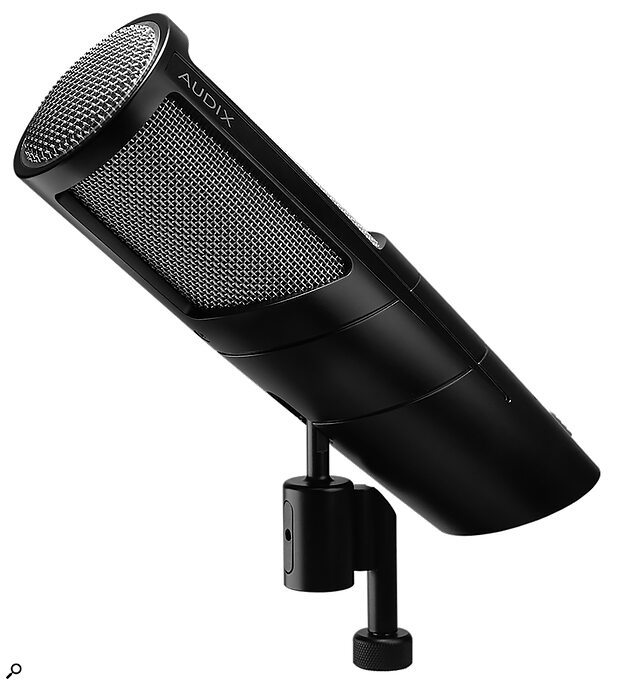Podcasting and vlogging have given high‑quality dynamic microphones a fresh lease of life. Models like the Shure SM7B and Electro‑Voice RE20 that sold in a steady trickle into broadcast environments are now mass‑market products. And, unsurprisingly, other manufacturers have been hungry to claim a slice of the pie. Audix made a confident move into this market a couple of years ago with the PDX720 Signature Edition: a big, bold, statement mic (which we reviewed in SOS October 2023), it had a price tag to match.
This is now joined in their catalogue by a more affordable sibling. The PDX520 competes head‑on with the likes of the SM7B, RE20 and beyerdynamic M 88 and, they say, “has been carefully designed to provide a true‑to‑life, full and accurate spoken voice capture”.
At first and indeed second glance, you could be forgiven for thinking that Audix have simply stripped off some of the 720’s blingier cosmetic flourishes in order to bring to market what is, essentially, the same mic at a lower price. The two mics inhabit the same housing, with the same magnetically attached lid on the butt end, which can be removed to expose switches that modify the sound. They also use the same integrated pivot mount, with the same awkwardly positioned XLR socket. However, when I rigged the two mics side by side, I was surprised to find that they sound noticeably different; and a little investigation reveals that the PDX520 is more than just a cut‑down 720.
Audix’s marketing literature describes the PDX720 as a hypercardioid mic, but their published polar pattern charts show something more akin to a subcardioid response. By contrast, the 520 is announced as a cardioid mic from the off, and it displays a fairly typical response for a directional dynamic mic, being perfectly cardioid between 500Hz and 2kHz and progressively less so at either end of the spectrum. As on the 720, the two switches respectively introduce a high‑pass filter and a “presence boost”, but without the 720’s multiple options. High‑frequency extension is actually greater on the 520 but, whereas the 720 has a very extended low end, the 520 rolls off at 60Hz, even without the filter active. On speech, in fact, the high‑pass filter makes very little difference, since it has only a gentle 6dB/octave roll‑off and turns over at 80Hz; the 720’s filter options are a fair bit more assertive.
The 520 presents speech with excellent clarity and balance, and doesn’t become tiring to listen to over long periods.
By the standards of moving‑coil mics, the PDX720 isn’t particularly dark, but with the switches set flat, the 520 comes across as the brighter of the two. Engage the presence boost on both mics and the difference is less apparent, although on my own voice, I preferred the sound of the 520 set flat to any other configuration on either mic. I don’t know that any moving‑coil mic will ever sound completely “natural”, at least next to something like a small‑diaphragm capacitor model, but the 520 presents speech with excellent clarity and balance, and doesn’t become tiring to listen to over long periods. And its uses certainly don’t stop at spoken word. I’d be more than happy to track rock vocals on the PDX520, and although its size makes it a little unwieldy as a drum mic, it’s very much at home sonically on anything where you’d usually put up an SM7 or the like.
Information
£333 including VAT.
$399
When you purchase via links on our site, SOS may earn an affiliate commission. More info...

